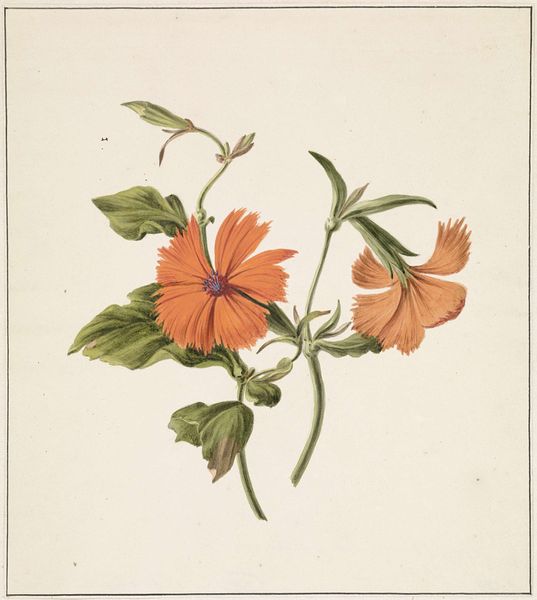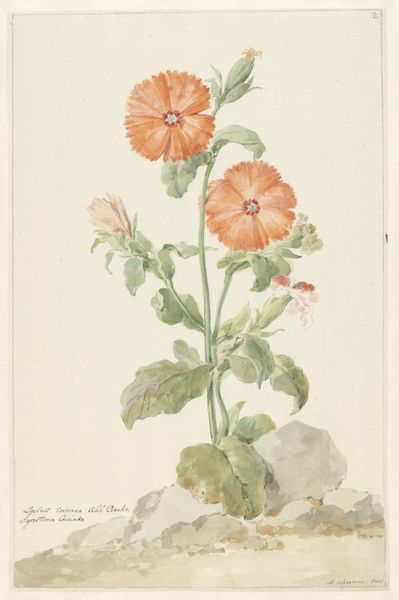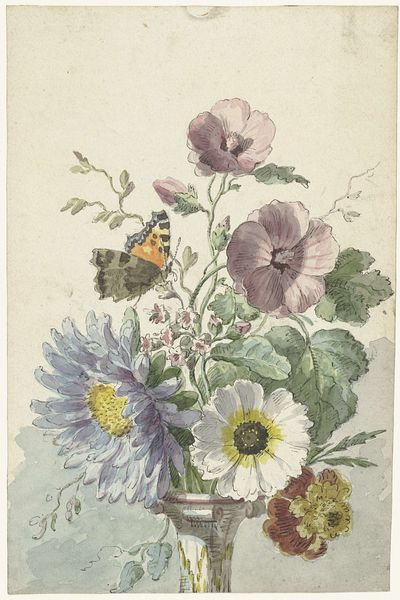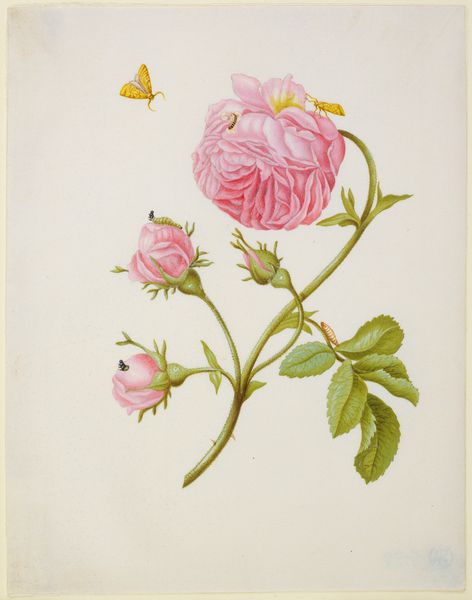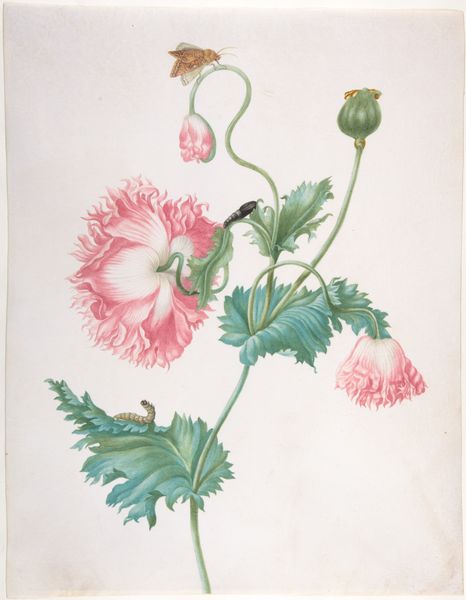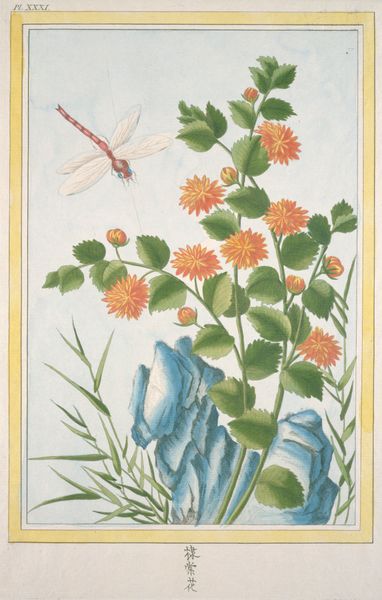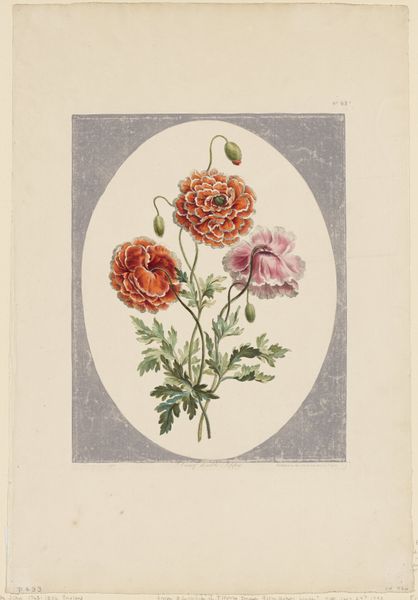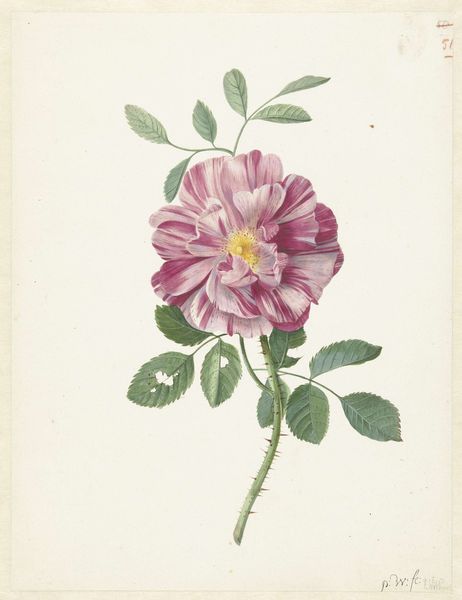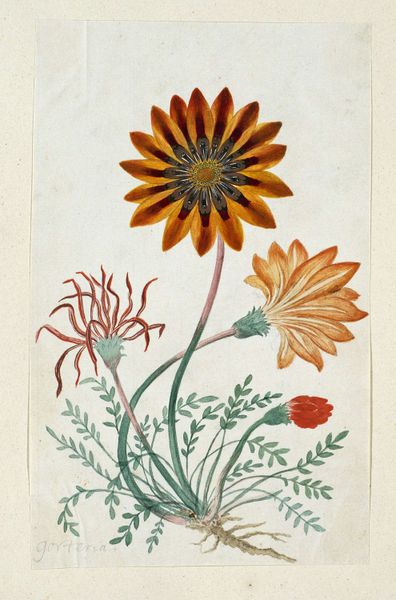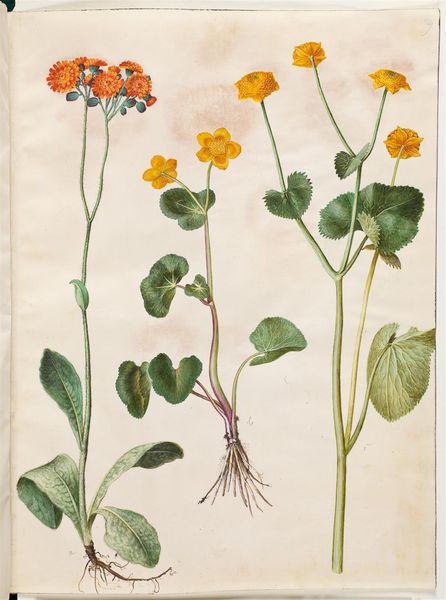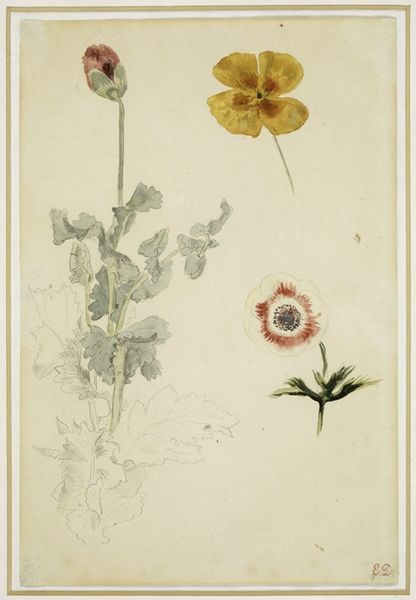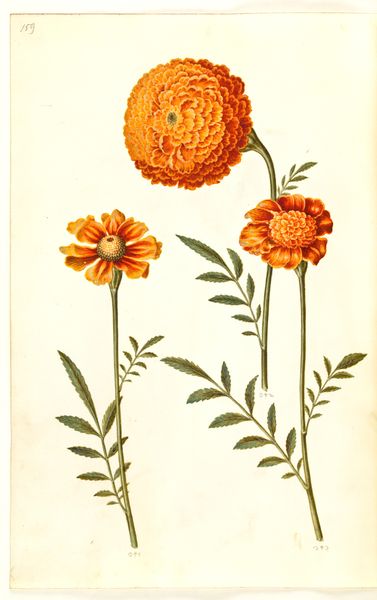
Dimensions: 15 5/8 x 12 1/2 in. (39.69 x 31.75 cm) (plate)
Copyright: Public Domain
Curator: Let’s discuss this print, “Papauer I. 106. Morpheus,” created by Adam Ludwig Wirsing in 1773. It’s currently held here at the Minneapolis Institute of Art. The work is executed in watercolor and print media. Editor: My first thought is the sheer vibrancy of that flower. The orange-yellow petals practically leap off the page. It’s interesting how a botanical illustration from that era can feel so…alive. Curator: Absolutely. And "Morpheus" refers to the Greek god of dreams. Given that poppies have historically been associated with sleep and oblivion, one can understand the link and its enduring power to instill those values over centuries of iconographic use. What do you make of the butterfly resting on the foliage? Editor: Butterflies, particularly during this time, often symbolize transformation and the soul’s journey. It could represent the fleeting nature of beauty and life, juxtaposed with the more permanent feeling of sleep and dreams connected to the poppy, highlighting social perceptions of women in society. It’s fascinating how nature becomes a site for embedding gendered meaning. Curator: Very insightful. I’m also struck by the detail Wirsing employs. He meticulously depicts every vein on the leaves, the texture of the flower, even the tiny hairs on the stem. This precision adds another layer, turning scientific observation into art. We could argue that this aesthetic echoes cultural memories. It is this ability to transform data to aesthetic appreciation of its context and time that has enabled art to survive for us to analyze in these spaces, like museums, centuries later. Editor: And the composition itself—the flower taking center stage, demanding our attention. The plain background further isolates it, elevating its significance, though perhaps reflecting an ideal of the male gaze in the enlightenment period. I think, sometimes, focusing just on nature is used as an attempt to avoid addressing greater society challenges. Curator: I agree. Wirsing’s “Papauer I. 106. Morpheus” provides insight into not just botanical illustration, but also the values of a society poised between scientific revolution and cultural shifts. It makes one wonder how these symbols continue to evolve and shape our understanding of the world. Editor: Exactly. This dialogue across centuries is precisely what makes viewing art so impactful; bringing the past into conversation with our contemporary context is what leads us to find new inspiration to push boundaries.
Comments
No comments
Be the first to comment and join the conversation on the ultimate creative platform.
